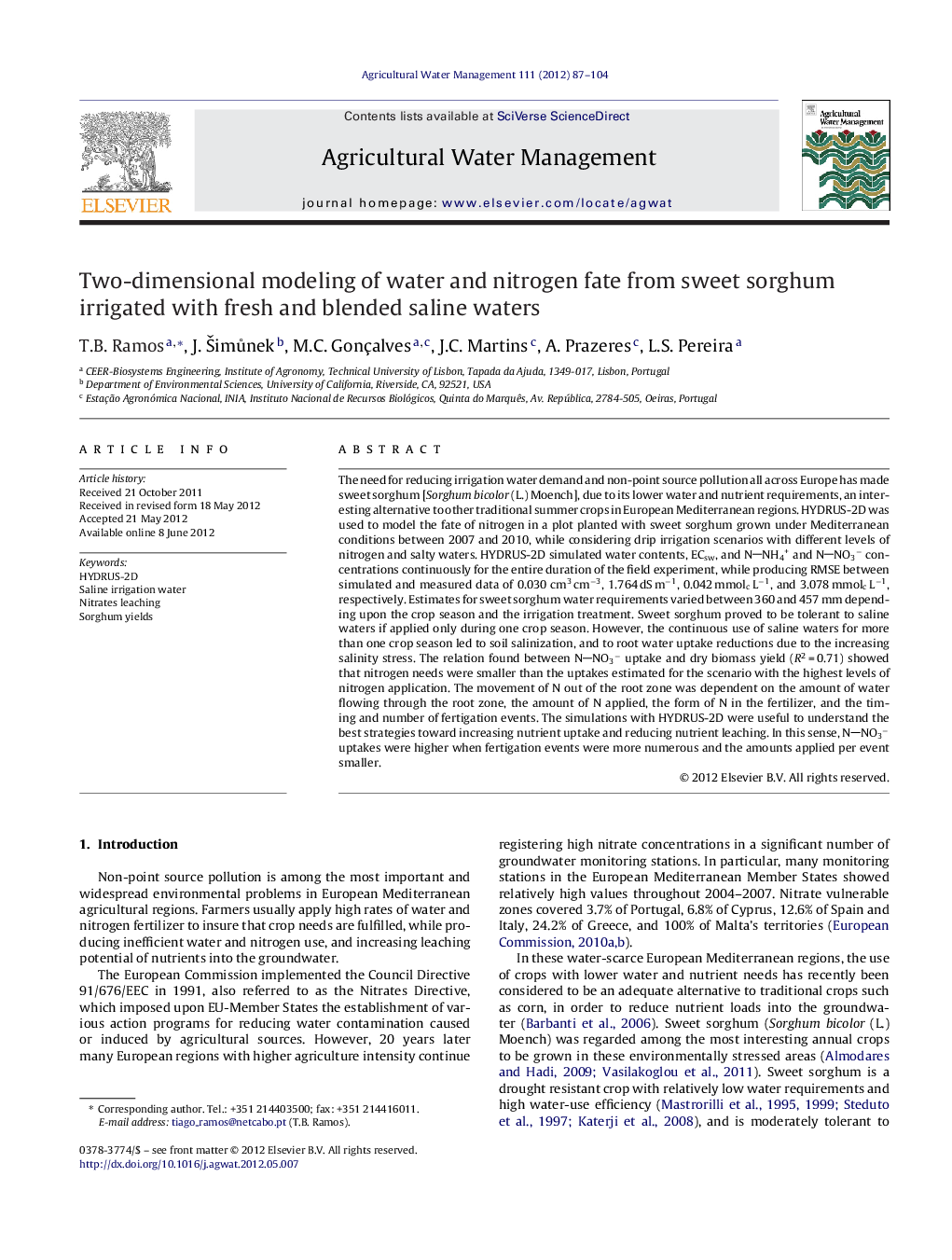| کد مقاله | کد نشریه | سال انتشار | مقاله انگلیسی | نسخه تمام متن |
|---|---|---|---|---|
| 4479100 | 1622968 | 2012 | 18 صفحه PDF | دانلود رایگان |

The need for reducing irrigation water demand and non-point source pollution all across Europe has made sweet sorghum [Sorghum bicolor (L.) Moench], due to its lower water and nutrient requirements, an interesting alternative to other traditional summer crops in European Mediterranean regions. HYDRUS-2D was used to model the fate of nitrogen in a plot planted with sweet sorghum grown under Mediterranean conditions between 2007 and 2010, while considering drip irrigation scenarios with different levels of nitrogen and salty waters. HYDRUS-2D simulated water contents, ECsw, and NNH4+ and NNO3− concentrations continuously for the entire duration of the field experiment, while producing RMSE between simulated and measured data of 0.030 cm3 cm−3, 1.764 dS m−1, 0.042 mmolc L−1, and 3.078 mmolc L−1, respectively. Estimates for sweet sorghum water requirements varied between 360 and 457 mm depending upon the crop season and the irrigation treatment. Sweet sorghum proved to be tolerant to saline waters if applied only during one crop season. However, the continuous use of saline waters for more than one crop season led to soil salinization, and to root water uptake reductions due to the increasing salinity stress. The relation found between NNO3− uptake and dry biomass yield (R2 = 0.71) showed that nitrogen needs were smaller than the uptakes estimated for the scenario with the highest levels of nitrogen application. The movement of N out of the root zone was dependent on the amount of water flowing through the root zone, the amount of N applied, the form of N in the fertilizer, and the timing and number of fertigation events. The simulations with HYDRUS-2D were useful to understand the best strategies toward increasing nutrient uptake and reducing nutrient leaching. In this sense, NNO3− uptakes were higher when fertigation events were more numerous and the amounts applied per event smaller.
► Sweet sorghum as an alternative to reduce water demand and nitrogen leaching.
► HYDRUS-2D was used to model water contents, ECsw, and NNH4+ and NNO3− concentrations.
► Estimates for sweet sorghum water requirements varied between 360 and 457 mm.
► Sweet sorghum showed to be tolerant to saline waters only during one crop season.
► N uptake increased with more fertigation events and smaller amounts applied per event.
Journal: Agricultural Water Management - Volume 111, August 2012, Pages 87–104